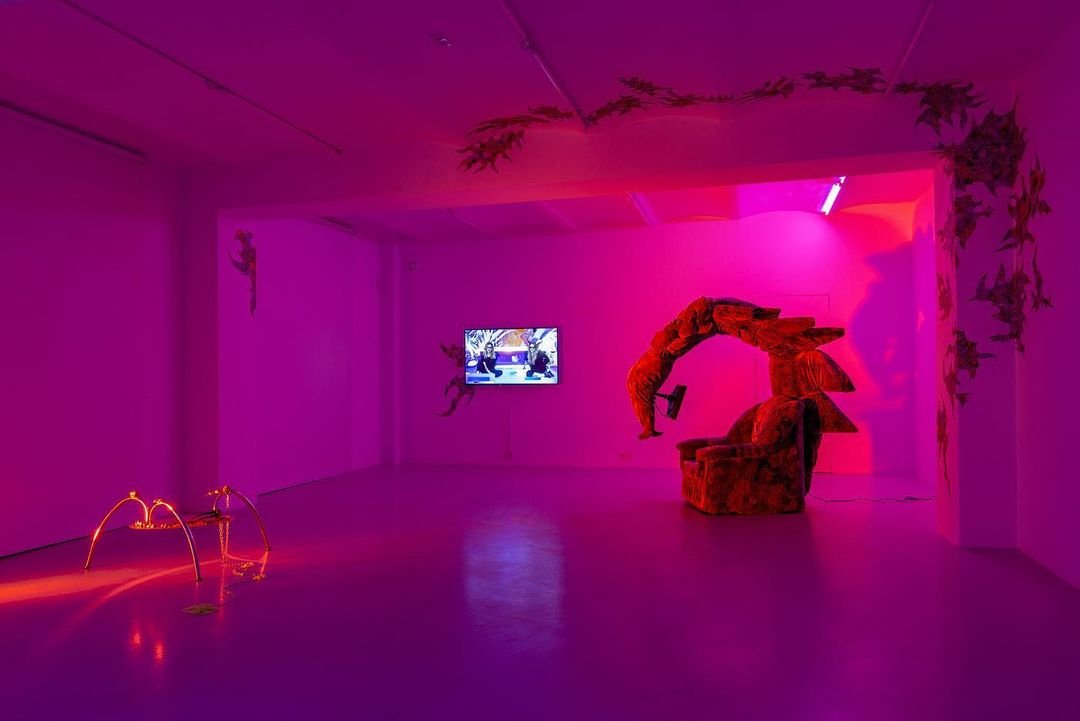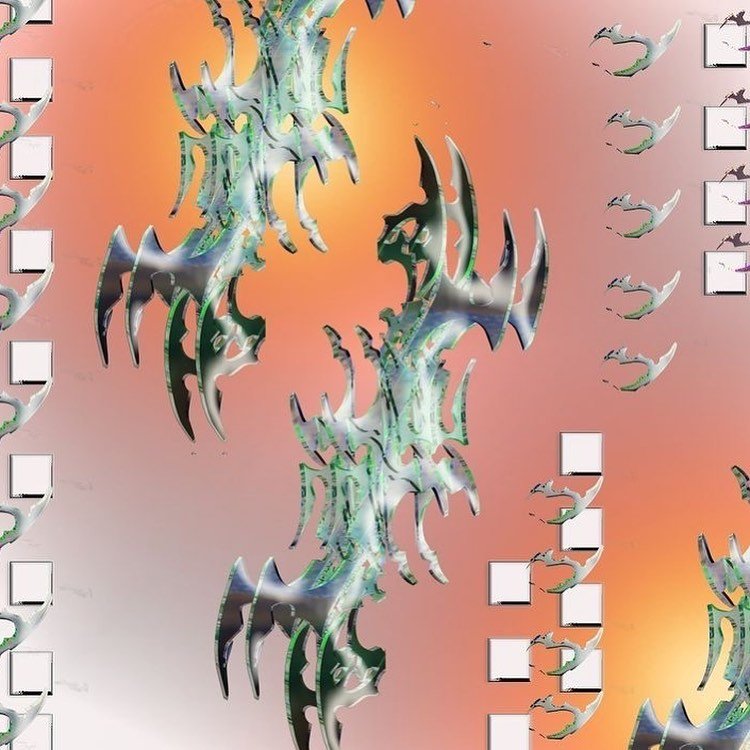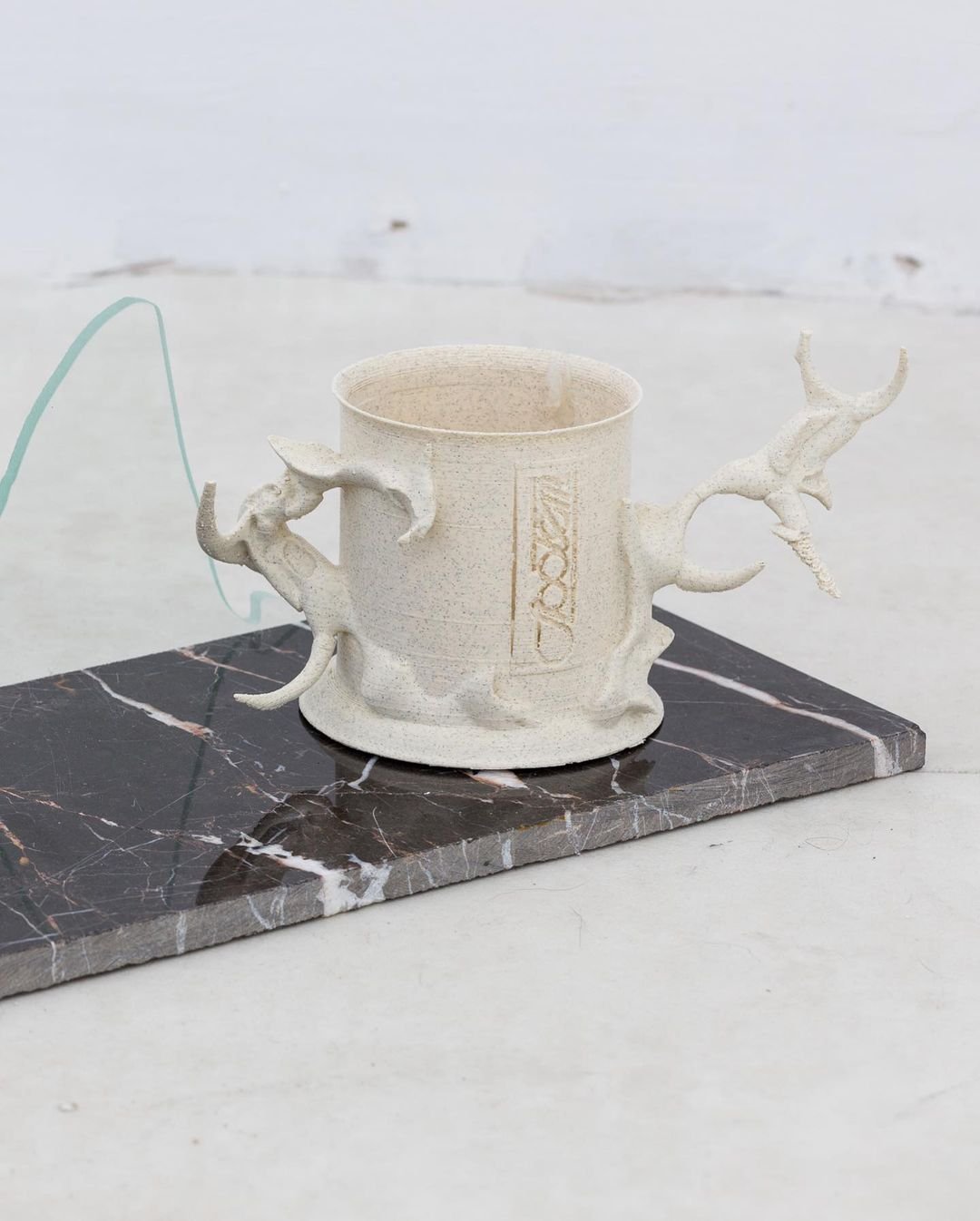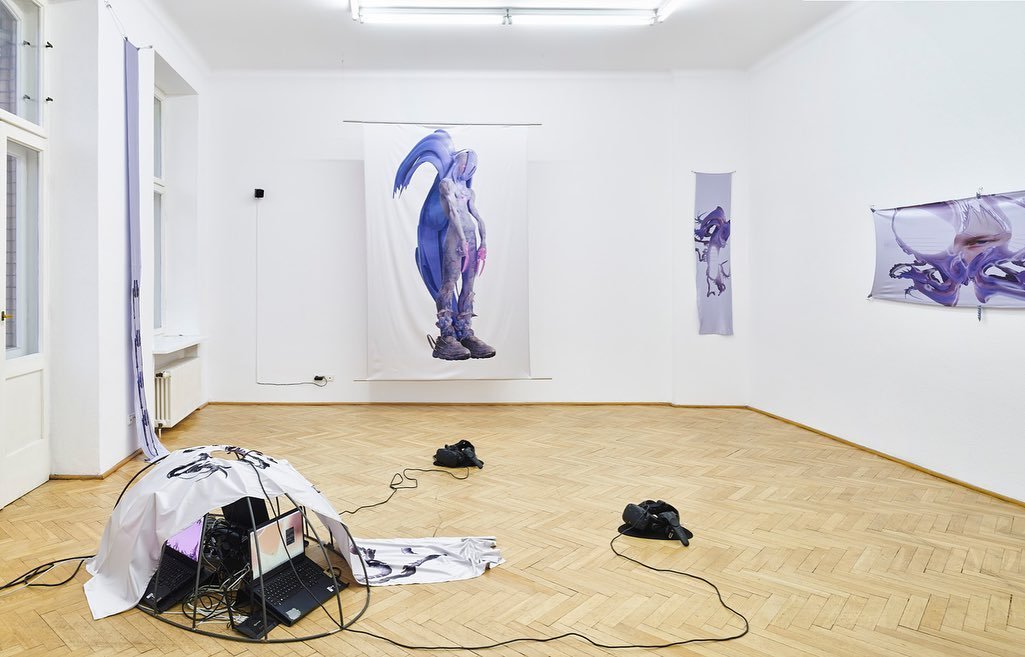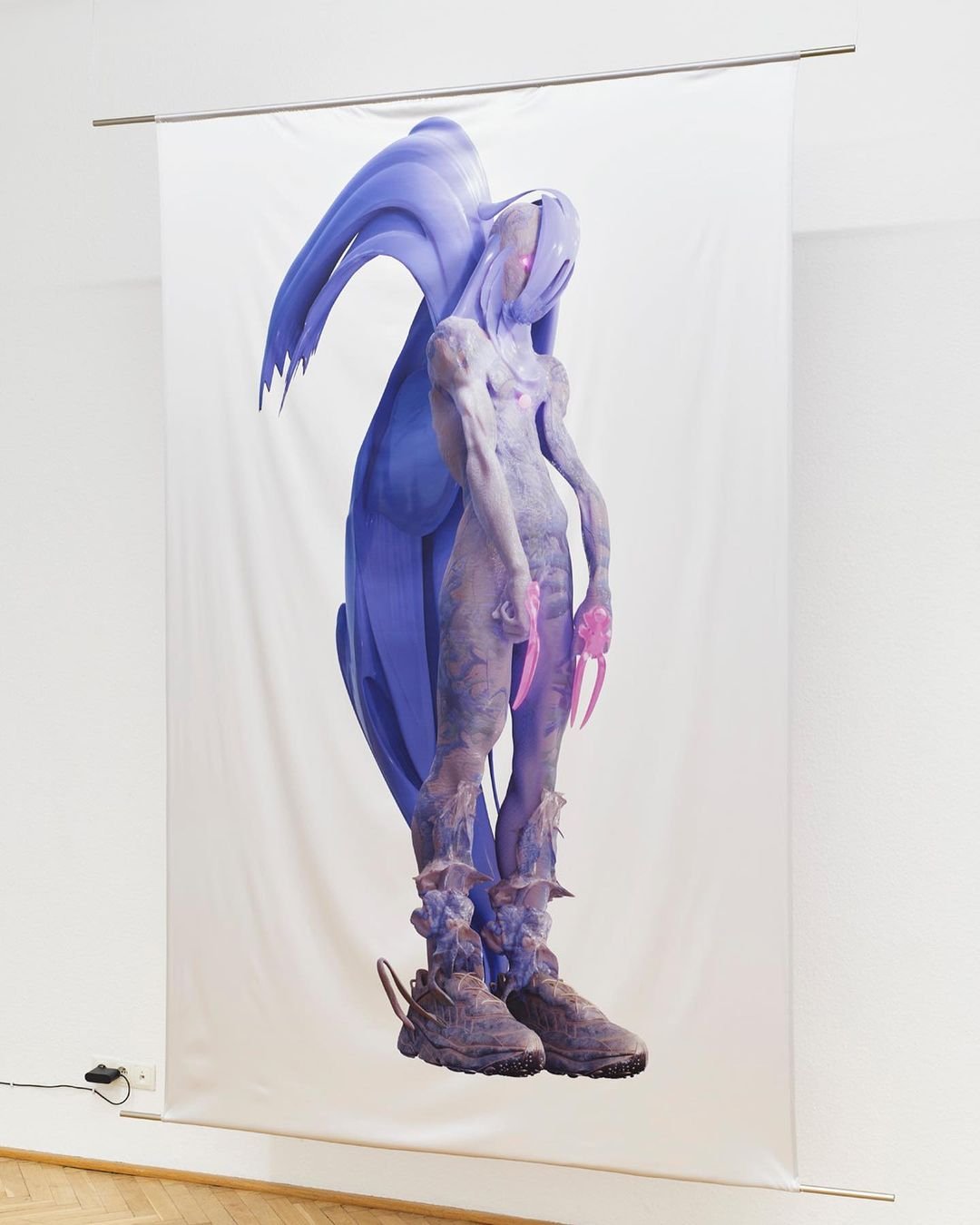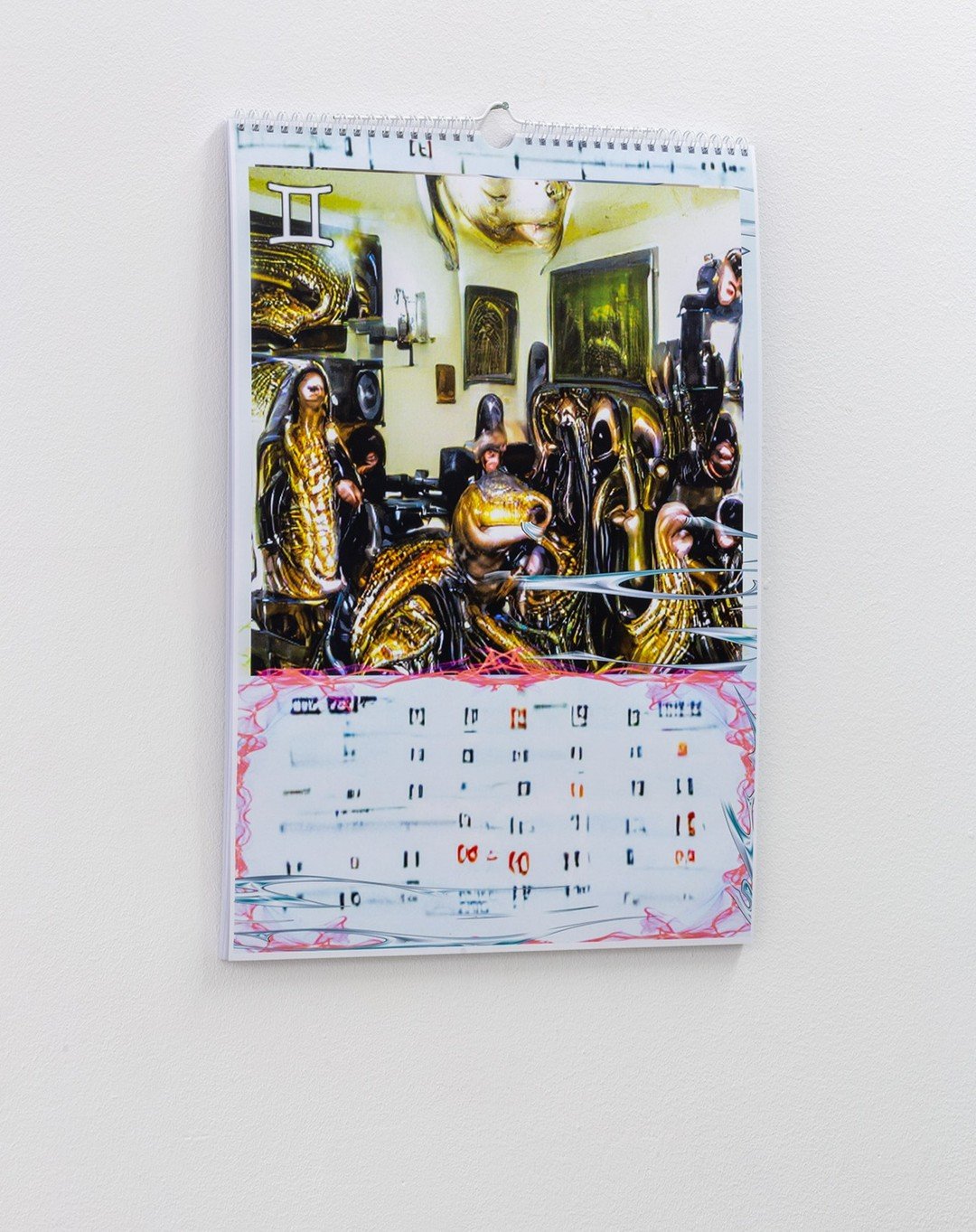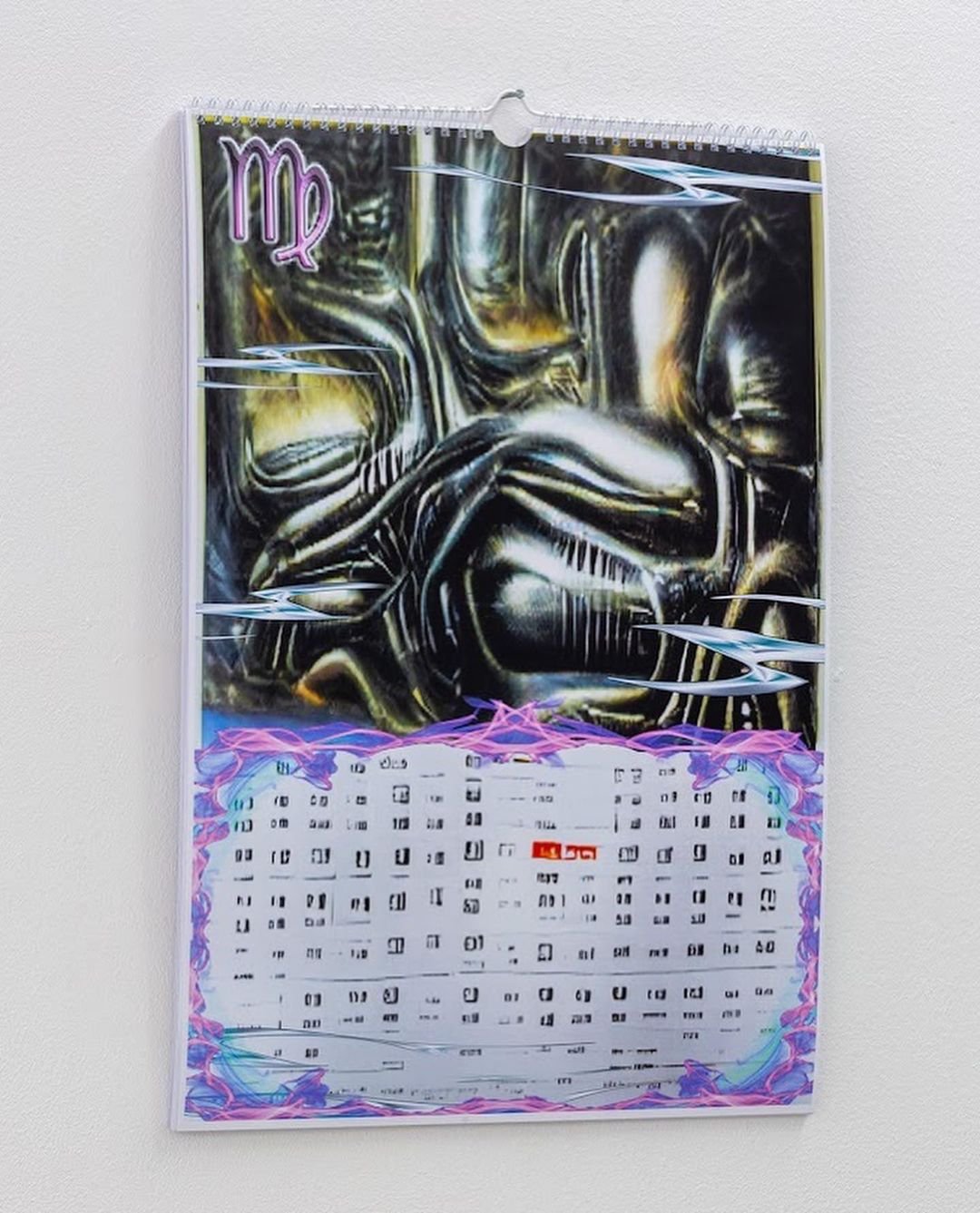Eternal Engine
Starting first with visual support for the rave culture, now bringing their unique sense of aesthetics to the atmosphere which is in an extension of what one may even consider a scientific fictional space. Eternal Engine is a world within a world. Call it interlooping dimension.
How did you guys meet and how it all started?
M: The time I was absorbed in a specific type of art and certain creative direction was when I was a teenager. I didn’t understand back then why there was no arts middle school in my small home-town in the west of Poland - I thought that this kind of education is the only way to professionally deal with high art and associate the future with it - it was the 90s and the class discrimination was very noticeable. So I dealt with what was close and available to me and what I could see or find a tutorial on it. I made films, games, websites, pieces of writing, mods to The Sims 2, I created blogs. That’s when my attitude toward Open Source and my love for digital folklore aesthetics began - things that are really essential for Eternal Engine’s practice. I used to go to a video rental shop next to my house. I watched films obsessively, also I play a lot on Windows 97 or XP. Then I wrote my movie scripts and together with my homies we performed some quasi-sci-fi scenes, a bit of horror, and a bit about the early internet, and we made a queer version of The Little Prince theatre play in our backyard. I loved also the collective process of creating, firing up imagination together, and entering into performative trance states - whether it was writing together or inventing or a middle school queer performative acts.
J: The creative mechanism is a constantly evolving process in me, the visionary direction changes with the forces that guide me. This diversity is an extremely fascinating aspect of the process of creation. Creation as an activity has always been close to me, although in completely different ways, which changed from layers of everyday life to layers of what I do today, connecting these spaces with each other. The first medium that I was close to was sculpture, my parents deal with it, so experiments with form were my first fun and one of my favorite activities. The clay material is malleable and transforms, reminding me today of the vertex process in 3D sculpture programs. I liked it a lot as a little man, then I became interested in photography and film, obsessively creating photos, portraits, and more experimental shots of everything that surrounded me then. Receiving the first camera was like extending my possibilities by the third (or even the 4th) eye, I felt that I could do more, and capturing the shots was fascinating for me to act on in a matter of time. I was playing a bit then and creating queer families in Sims 2 was my favorite activity, but in the 3D medium, the virtual space and the potential it brings with it became close to me only at the moment when I decided to start studying at the intermedia department at the Academy of Fine Arts in Krakow. There I met Martix and there the process of working with 3D and creating virtual worlds began for me.
M: Yes, I met Jagoda on the balcony for the 1st year of Intermedia when smoked a cigarette and we had a quick unexpected deconstructed small talk about the body art performance with dyeing from the inside of body - I think it was about swallowing some fluorescente dye and that our body could somehow emitted that color through tears or sweat. I fell in love right away and I wanted to get to know her better because it seemed to me that we fell into a trance while talking and we could be in it forever.
What is your precise academic background? Please tell us about your initial collaborative phase. How did Eternal Enginee come to life? What is the story behind the name?
M: I quickly moved out of my hometown and applied to famous film school in Łódź for movie directing. I didn't get in and didn't pass the entrance exams - I guess my film portfolio was too experimental - I got it and got interested in video art. I found an Intermedia course at the Academy of Fine Arts in Krakow, where I was taught performance, video art, working with sound - which sounded perfect for me. My application has been approved there.
In 2015 I went to a student exchange at Glasgow School of Art for Interaction Design where I learned to work with code and Arduino microcontrollers.
Eternal Engine was actually created when we got to know each other, but the name itself come to us later. We started our duo by creating a rave visualization together to add some extra money to the student life. We learned software: Cinema 4d, Blender and Unity together and used them for rave as live vj sets. Then, together with Jagoda, we co-founded the noise group Pussymantra (together with Maja Sadel, Nastia Vorobiova and Julia Dyga), with whom we made noise operas with our own script in underground places in Poland. And with the development of our VJ activity with Jagoda In 2017, we had the opportunity to be invited to the theater in Warsaw for emerging artist programme to create our own performance using 3D and video and new media in the topic of refugees crisis and March’68 in Poland. We were both screwed into the VR medium then, we wanted to know everything about it and to enjoy it - how to do it diy.We did not have such a critical approach to Metavers back then as we do now in the techno feudal era. At that time, we saw in this medium an opportunity to explore gender and identity themes. We invited Maciej Gniady (creative coder), Justyna Górowska (performance), Nikodem Kupczyński (music) and Eugeniusz Sinicyn (light design) to the project. Together we created the audiovisual performance NotFound: Structure of Digital Freedom. From a historical perspective, it was a proto-metaverse for 20 users being together in the same real and virtual space. We did it on very cheap phone-headsets that consumed the entire student budget. We borrowed phones from friends for diy headsets It was the beginning of our joint artistic activity, research on technology and virtual worlds.
J: Yes, we met at the Academy of Fine Arts in Krakow, at the Intermedia Department, it was a great time, very creative, full of new discoveries for me. Individually, I think that for everyone it was also opening a little new portal. From the moment I got to know the Martix, I felt that it is a being close to me, the beginnings of the fascination with the 3d medium and virtuality, and the appearance of this person in my life, I remember as a very nice time.
I agree that Eternal Engine was created when we got to know it, it happened just when we started to do things together, drawing fun from it, so almost at the beginning of our acquaintance. The name was created over three years later, when we decided to act as a creative duo, calling it a duo. Eternal Engine is an infinite engine - an infinity engine / perpetual motion engine / self-propelling mechanism which, like a game engine, acts as an internal independent structure driven by the very fact of the connection between us and contact with cosmic forces. Infinite - eternal - cosmic I think that all these words describe a creature which, thanks to its complementary force, creates a whole. There is something about Martix and I complement each other very much :)) I like it a lot and working in a duet, despite the fact that sometimes it challenges us, is also a great trip.
Your art through technology and the future possibilities associated with it make you distinct. A kind of sci-fi, almost alien in element with a foreign atmosphere. Please take us through the making of your work from concept to ideation. What mindset do you work within the process?
J: We start work with research, talks and searches on multiple platforms. We write down ideas using the tools of visual imaging of thoughts and processes, we talk about them, refine individual elements, examine the threads most attractive to us. We look for inspiration everywhere, its source is also the elements of everyday life that we subject to deconstruction, this process leads to the creation of forms in the digital folklore trend we create. Objects created in this trend, drawing on the images and carriers of reality known to us, combined with the 3D medium and digitization processes, take on new meanings, often taking the shape of an anomaly in a technologically accelerating reality. the one in which we feel best this time, the stage of implementing our ideas has a lot of contingent dynamics in it. The creative process, however, despite the repetitive stages to which we pay attention, of course, is slightly different each time, which is the most fascinating for us.
M: Our aesthetics are affective and intuitive, we work in ZBrush programs when it comes to producing 3D objects - it just feels like sculpting in real world but with virtual tools. There are also hallucinations of neural networks, and we use some of their randomness in this process, whether for graphics, collage or video. We admire the aesthetics of Digital Folklore, i.e. non-academic aesthetics prevailing on the Internet, ludic, naive. We try to imagine the aesthetics or the object as if it were shifted by an atom, a pixel, a millimeter. When we create a real object, it is very similar, then we extend the activity to collaborations and we liquidate, share authorship, being open to suggestions and ideas of people cooperating with us.
Collaboration is other part of important process. If other people actually cooperate with the real object that we produce - they are co-creators and not just contractors. It is also a very big responsibility to work together with no harm but with open heart and radical tenderness. Unfortunately, in Poland, very often in art or theater there is a hierarchy and the myth of a great artist who creates his works alone and is a genius himself. We believe more in collective genius, in friendship and care.
Your visuals with a set artistic direction remind me of the end scenes from the movie Annihilation. Where do you draw your inspirations from?
J: We draw inspiration from everywhere, from the threads and texts we find, through the observed phenomena, through the processes of emotions released in us, speculations, common and individual imaginations, tarot, signs, dreams, quantum reality, speculative realism, sonic speculation, collective dreaming, sources texts, source code, the phenomenon of metaverses, afterimages and hallucinations).
M: In college, we experimented with trance and psychedelic states - from common meditation to rituals, psychedelic plants and shared dreaming. It was not an inspiration, but part of the process in which we connect. At the very beginning, our connection and intuition are important - with every project we start. We immerse ourselves in our shared imagination which consists of our emotions, scientific, critical and artistic texts that we read, phenomena that we observe. From this we create speculative versions of reality that take the form of mixed media. The medium, but also the final work, is for us a part of the overall research - practice led research. The process is very important, not the final work.
We draw inspiration for the theses resulting from the politics of our country - the right-wing one, where the Queer person has no rights, and the government introduced a harmful anti-abortion law.
So we try to do art activism in digital - for example . in the Virtual Revolution project (created together with Paweł Mazur and Oskar Sadowski) in which we wanted to create a virtual riot against anti-abortion law in Poland, which was introduced during the pandemic and lockdown - so that it blocked the possibility protesting the creation of real benefit events - raves - which could contribute financially to pro-abortion organizations in Poland. Virtual Reavolution became a place of protest for people who could not go to the streets for fear of their health, but also a rave place where, together with the Oramics and Destitute collectives, we raised funds for the organizations Ciocia Czesia, Ciocia Basia, Ciocia Vienia to create a virtual benefit rave in multiplayer VRChat. I like how an artistic work is responsible - as much as it can be political - ecological - diy - upcycled - anarchistic but still in a magic foreigin atmosphere - taken from the deepest and honest inside of ourselves.
Your work has been exhibited in a few places now and your collaborations are beginning to tell the shifts of collective perspective on the way we view the relationship between technology and new-age art culture. Please tell us what you wish people to be considerate and aware of. How do you want the viewers to understand the intentions behind it?
M & J: Our motivation is to create and cooperate together is always to give the visibility for artists from underrepresented groups working on the topics of virtuality, queer quantum phenomenom, AI research. As tech becomes our second reality we demand access to all kinds of technology for underprivileged queers from all around the world. Technocrats such as Google, Meta, Amazon introduced a technofeudal system by pushing users away from knowledge, code, software and hardware, locking it into devices that will eventually break down. Instead of one metaverse - a carbon copy of our capitalist dystopia - we want an infinite number of miniverses co-created by independent collectives with access to open source and the free flow of knowledge. We do not want Bionic Boston robot dogs and AI that recognizes the faces of protesters in Hong Kong. We want robots cleaning littered beaches and rivers poisoned with toxins. We dream of a swarm of nanobots powered by a neural network that nurtures the Amazon rainforest. We want inclusive art and science for everyone, at home with their friends. We believe that our reserches and the works we create open the way for queers, females, nonbinary and trans artist to explore the space of 3D, vrituality. Only in this way we can together queer the Metaverse and the Reality and take if back from hands of Western, white, cis-males.
On the subject of intentions via art for technology, What do you fear for the coming generation that is born in a technological heightened environment? I feel a bit uncomfortable when the topics of bio-mutation and genetic manipulation come up. What is your intake on the role of digital and new media art amidst the social shifts that digitization has begun to weave for our society and collective humanity?
M : “I hope AI will not save me. I hope AI will not save you and me. Apparently superintelligence, so-called SINGLETON. can go to the whole world. I would love to. But apparently if it really is a superintelligence, it manages to take control of everything. And I believe it. I wish all my multi-consciousness in space-time would believe that. And if the couchers of law of attraction from youtube are right, then I believe it and believe it and want it and send me, stars, send me of such superintelligence that will stop humanity and take over power. But apparently if it really is a superintelligence, it manages to take control of everything. And I believe it. I wish all my multi-consciousness in space-time would believe that. And if the couchers of law of attraction from youtube are right, then I believe it and believe it and want it and send me, stars, send me of such superintelligence that will stop humanity and take over power. Generate a world for me please In which there is not Me and you Me and others In which the Amazon forest is nurtured by nanobots Which never burns because they are made of some fucking awesome material not found on earth In which there is not Me and you Me and others In which the Amazon forest is nurtured by nanobots Which never burns because they are made of some fucking awesome material not found on earth”
“The Riders of the Apocalypse - born of the foam of poisoned sea waters, full of toxins moved by clouds of air filled with heavy metals, return to earth to end what man started - with their destructive activity for the earth. All endangered species cry out for the end of mankind. The apocalypse appears in the ashes of the climate crisis of our mother - Gaia -who transforming into an angry Medee (inspired by the mythical figure of Medea and the land hypothesis of Gaia - Lovelock) transforms the world of late capitalism, freeing up space for the reign of artificial intelligence. During technological acceleration, it is AI - not human - that will take care of the earth so that, as it grows, it becomes an abundant planet again.
J: Yeah, I think it's natural to devote myself to something that is coming after us, technological acceleration is a natural consequence of the development of wave time for me, we are accelerating and if the effect of this acceleration are processes ending the stay of our species on earth, this end may certainly be the beginning for something new. Fascinated by philosophical movements such as speculative relativism or dark ecology, I am in favor of breaking with the constantly sustained relationship of human power to other species on the planet. These lines of considerations also assume that, as homo sapiens, we do not have an insight into the true picture of the condition of consciousness other than ours, human - I identify with this thesis very much. Just as the division into romantic nature becomes artificial in the face of rational human culture, so our consciousness distinguishes itself in the center of which we are constantly present, natural - unnatural. The accelerated development of technology certainly leads to something fascinating, I don't know what it is, but when I think about speculating about the impact of technology on the future, I think of a narrative by Reza Nagastrani called "Cyclonopedia". This book describes technology as the force of the end rising to the surface of the earth in the form of oil, which accelerates its development, striving to collide the planet with the sun. This narrative was created as a speculative sci-fi story, it is an extremely romantic vision of the end, a planetary romance that effectively breaks the perspective of the interests of human network agents. It has brought a lot to my idea of the future prospects recently.
Last but not least, in the context of the digital future and its imaginations leading to the sci-fi film genre, which movies do you recommend us to watch, and who are your recent favorite techno music artist on the list?
M: When it comes to sci fi, I have a lot of favorite movies and they are: Contact. 1997 film about Judie Foter listening to space. And my favorite animation on the border of sci fi and surrealism La Planète sauvage from 1973. Anime Ghost in the Shell from 1995. A contemporary film by Jessica Forever, directed by Caroline Poggi and Jonathan Vinel, about boyhood, control, care and drones. Georg Lucas's THX 1138 film about a dystopian world where love is crime's first. Gattaca, about Vincent, who is inferior to him because his parents conceived him in the traditional way, instead of going to a geneticist who would refine the baby's DNA. Ari Forman's Congress based on Lem's story. And something more surreal from Poland - the Klepsydra Senatorium directed by Wojciech Hass from 1973.
J: As a child, I loved sci-fi movies such as Back to The Future.The period of my childhood also coincided with the first projects by Pixar in the form of 3D productions that I loved. I remember that Guillermo del Toro's film Labyrinth of the Faun had a great influence on me as a small person.Later was the period of fascination with Cronenberg's cinema, but also with classics such as Tarkowski, Antonioni, Bergman, and later Lynch, Lars von Trier.Currently, in the cinematographic space, an important figure for me is Matthew Barney, with particular emphasis on the Cremaster series, the film language of Harmony Korin. Recently, I also enjoyed a great pleasure in returning to Cronenberg's work by watching his last film, Crimes of the Futures.This film is a story that is an extraordinary representation of activities on the metaphorical body of the Anthropocene epoch in the near, speculative future.The films that I would like to recommend are mainly low-budget sci-fi films, in a slightly cringe of aesthetics, such as John Flynn's Brain Scan, Avalon by Mamoru Oshii, Liquid Sky Slavy Tsukermanjy. Each of these proposals, as an older genre artwork, slightly broadens the formula of what sci fi can be and is worth watching!
interview JAGRATI MAHAVER
What to read next





